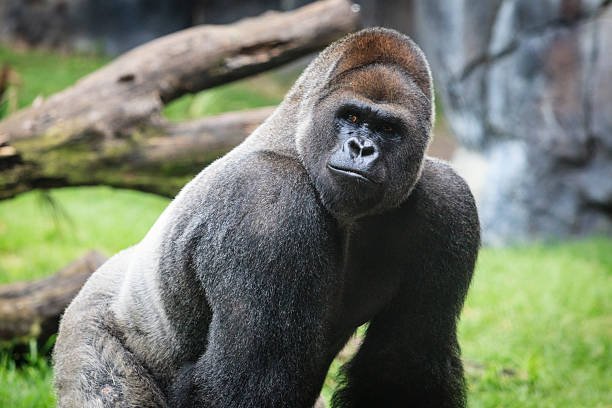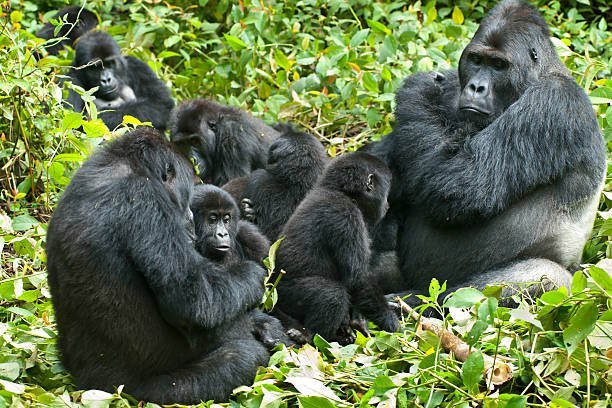What are the primary challenges in gorilla rescue operations?

Introduction:
In this article, I’ll delve into the intricate world of gorilla rescue operations, shedding light on the formidable challenges that conservationists and organizations face in their noble efforts to protect these majestic primates. Gorillas, both the critically endangered mountain gorillas and the western lowland gorillas, are threatened by habitat loss, poaching, and diseases. The task of rescuing and rehabilitating these magnificent creatures demands a relentless commitment to their welfare, and it is a journey fraught with hurdles.
As we embark on this exploration, we will uncover the primary obstacles that gorilla rescue teams encounter, from the logistical intricacies of locating and capturing injured or orphaned gorillas in dense forests to the complex process of their rehabilitation and reintegration into the wild. Understanding these challenges is crucial in ensuring the survival of these remarkable creatures and their vital role in maintaining ecological balance.
Limited Gorilla Habitats
Gorillas, both mountain gorillas and western lowland gorillas, primarily inhabit the lush, tropical forests of Africa. However, these habitats are under constant threat due to deforestation, agriculture, and human settlement. The limited availability of suitable habitats poses a significant challenge for gorilla rescue operations. As human populations expand and encroach on gorilla territory, it becomes increasingly difficult to find safe and appropriate release sites for rehabilitated gorillas. Furthermore, the fragmentation of gorilla habitats can lead to isolated populations, reducing genetic diversity and increasing vulnerability to disease outbreaks.
Conservationists and rescue organizations often find themselves in a race against time to secure and protect these remaining habitats. Land-use planning, anti-deforestation initiatives, and the creation of protected areas are essential strategies to address this challenge. In addition, educating local communities about the importance of preserving gorilla habitats is crucial for long-term success in gorilla conservation. The limited availability of suitable habitats remains a pressing issue, and addressing it is fundamental to ensuring the survival of gorilla populations.
Poaching Threats
Poaching poses a severe and ongoing threat to gorilla populations. Gorillas are targeted for their body parts, such as hands and skulls, which are sometimes used as trophies, or their infants are captured and sold in the illegal wildlife trade. Additionally, bushmeat hunting, driven by the demand for exotic meats, further endangers gorillas. The presence of armed poachers in gorilla habitats creates a constant danger for both gorillas and the human teams attempting to rescue them.
To combat poaching threats, gorilla rescue operations often involve anti-poaching patrols to safeguard gorilla habitats. These patrols work to apprehend poachers and dismantle illegal trade networks. Moreover, education and awareness campaigns are vital in changing local attitudes toward poaching. Economic alternatives for local communities, such as ecotourism, can also help reduce the reliance on poaching for livelihoods. Despite these efforts, poaching remains a formidable challenge, requiring ongoing vigilance and international cooperation to combat effectively.
Disease Transmission Risks
Disease transmission is a critical concern in gorilla rescue operations. Gorillas are susceptible to various diseases, including respiratory infections, gastrointestinal illnesses, and potentially fatal diseases like Ebola. As humans come into close contact with gorillas during rescue and rehabilitation efforts, there is a risk of disease transmission in both directions. Humans can introduce novel diseases to gorilla populations, and gorillas can transmit diseases back to humans.
To mitigate disease risks, rescue teams follow strict biosecurity protocols. These measures include wearing protective gear, maintaining a safe distance, and minimizing the duration of contact with gorillas. Quarantine periods are also employed to observe gorillas for signs of illness before releasing them into the wild. Additionally, vaccination programs for human and domestic animal populations surrounding gorilla habitats are crucial to reduce the risk of disease spillover. Disease transmission risks underscore the need for stringent safety measures in gorilla rescue and rehabilitation efforts.
Dangerous Capture Operations
Gorilla rescue operations often involve the challenging and perilous task of capturing injured or orphaned gorillas. These operations can be fraught with danger for both the gorillas and the human teams responsible for their rescue. Adult gorillas are incredibly strong and can be aggressive when they feel threatened. Additionally, the stress of capture and transportation can have adverse effects on the gorillas’ health.
To address the dangers of capture operations, experienced and trained personnel are crucial. Capture teams use tranquilizers to sedate the gorillas safely, minimizing stress and potential harm. The use of appropriate equipment and techniques, such as dart guns and specialized crates, helps ensure the safety of the gorillas and the human rescuers. Despite these precautions, capture operations remain risky, and continuous efforts are made to improve safety protocols and minimize the stress on the gorillas involved.
Psychological Trauma in Rescued Gorillas
Rescued gorillas often experience profound psychological trauma due to their traumatic past, which may involve witnessing the killing of family members or experiencing captivity and abuse. This trauma can manifest in various ways, including anxiety, depression, aggression, or withdrawal. The psychological well-being of rescued gorillas is a critical consideration in their rehabilitation and eventual release into the wild.
Gorilla rescue organizations employ specialized caretakers and veterinarians who work to address the psychological needs of the rescued gorillas. This includes providing them with a nurturing and secure environment, as well as opportunities for socialization with other gorillas. Some gorillas may benefit from behavioral therapy to help them cope with their past experiences. The rehabilitation process can be a long and delicate one, requiring patience and expertise to help the gorillas recover and adapt to their new environment. Ensuring the mental health of rescued gorillas is an essential aspect of their successful reintegration into the wild.
Costly Rehabilitation Efforts
Gorilla rescue and rehabilitation efforts are resource-intensive. The costs associated with caring for and rehabilitating gorillas can be substantial. These expenses encompass everything from medical care and food to staffing and infrastructure. Financial sustainability is a constant challenge, as funding sources are often limited and unpredictable.
Efforts to address the costly nature of gorilla rehabilitation include seeking financial support from government agencies, international organizations, and private donors. Establishing partnerships with institutions and individuals who are committed to gorilla conservation is essential. Fundraising initiatives and public awareness campaigns are also used to generate support and contributions. Balancing the financial demands of gorilla rescue and rehabilitation with the imperative to save these endangered primates is an ongoing challenge for conservation organizations.
Human-Wildlife Conflict
As human populations expand and encroach on gorilla habitats, conflicts between humans and gorillas can arise. Gorillas may raid crops, leading to retaliation from local communities. These conflicts can result in harm to both humans and gorillas and create a negative perception of gorillas among affected communities.
To address human-wildlife conflict, initiatives are launched to establish buffer zones and protect gorilla habitats. Education and community engagement programs are crucial in fostering understanding and cooperation between humans and gorillas. Implementing non-lethal methods of crop protection, such as fencing and deterrents, can help reduce the risk of conflicts. Addressing these conflicts is vital to ensuring the safety and well-being of gorilla populations and the harmony between humans and gorillas.
International Collaboration Hurdles
Effective gorilla rescue and conservation often require international collaboration due to the global nature of these endangered species. Coordinating efforts among multiple countries, organizations, and stakeholders can be challenging due to differences in regulations, policies, and priorities. International collaboration hurdles can slow down critical rescue and conservation actions.
To overcome these hurdles, conservation organizations work to establish partnerships and alliances with international bodies, governments, and local communities. Developing standardized protocols and agreements for cross-border activities helps streamline rescue operations. Additionally, promoting awareness of the importance of international collaboration in gorilla conservation is vital in fostering cooperation and overcoming bureaucratic barriers. Overcoming international collaboration hurdles is essential to ensuring that gorilla rescue efforts are effective and that these remarkable primates receive the protection they desperately need.
Conclusion:
I hope that this exploration of the primary challenges in gorilla rescue operations has shed light on the intricate and demanding nature of conservation efforts for these remarkable primates. Gorillas, facing threats such as limited habitats, poaching, and disease transmission, require dedicated and well-coordinated rescue operations to ensure their survival.
In conclusion, the challenges of gorilla rescue are manifold, spanning ecological, societal, and international dimensions. Nonetheless, as we have seen, there are ways to address these challenges. By preserving gorilla habitats, combatting poaching, and diligently managing disease risks, we can provide a more secure environment for these great apes. The commitment of experienced teams, who navigate dangerous capture operations and mitigate the psychological trauma of rescued gorillas, is invaluable. Costly rehabilitation efforts and the resolution of human-wildlife conflicts demand continued attention and support. Lastly, international collaboration is pivotal in unifying the global community’s efforts to save gorillas.
In the face of these formidable challenges, it is our collective responsibility to work tirelessly to protect gorillas and ensure their place in the natural world endures for generations to come.










Post Comment